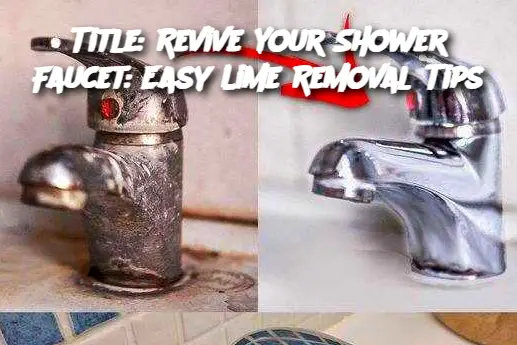-
Prepare the Cleaning Solution: Fill a small plastic bag halfway with white vinegar. If your faucet has extra stubborn limescale, add a tablespoon of baking soda to the vinegar before placing the bag over the faucet.
-
Secure the Bag Over the Faucet: Submerge the faucet head or affected parts into the bag, making sure the vinegar is in contact with the lime deposits. Secure the bag in place with a rubber band or twist tie.
-
Soak the Faucet: Let the faucet soak for 30 minutes to an hour. For severe buildup, leave it for up to two hours. This allows the acidic properties of vinegar to dissolve the limescale.
-
Scrub the Residue: Remove the bag and use a toothbrush or small scrub brush to gently scrub away any remaining deposits. The softened lime will come off much more easily after the vinegar soak.
-
Rinse and Dry: Rinse the faucet thoroughly with warm water and wipe it down with a microfiber cloth to remove any streaks and ensure it shines like new.
Serving and Storage Tips:
-
Preventive Maintenance: To keep limescale from building up again, wipe down the faucet with a clean, dry cloth after each use.
-
Use a Water Softener: If possible, consider installing a water softener or using a shower filter to reduce mineral deposits in the long run.
-
Frequent Cleaning: Don’t wait for thick buildup—clean the faucet once a month to keep it looking pristine.
Variants:
-
Lemon Juice Alternative: If you don’t have vinegar, fresh lemon juice can also break down limescale. Squeeze the juice into the bag and follow the same process.
-
Baking Soda Paste: For very tough spots, mix baking soda and water into a paste. Apply it directly to the limescale, let it sit for 15 minutes, then scrub and rinse.
-
Vinegar Spray: For a quick touch-up between deep cleanings, fill a spray bottle with half vinegar and half water. Spray the faucet, let it sit a few minutes, then wipe clean.
FAQ:
Q: Can I use vinegar on all faucet finishes?
A: While vinegar is safe for many finishes, it’s a good idea to check the manufacturer’s recommendations first. For delicate or special finishes, test a small, inconspicuous area before cleaning the entire faucet.
Q: How often should I clean my shower faucet to prevent limescale buildup?
A: Monthly cleanings can prevent significant buildup, but if you live in an area with very hard water, consider wiping down the faucet after each use and performing a deeper cleaning every two weeks.
Q: What if I don’t have a plastic bag handy?
A: You can soak a cloth in vinegar and wrap it around the faucet, securing it with a rubber band or clip. This method works just as well.
Q: Is it safe to mix baking soda and vinegar?
A: Yes! The mixture will fizz, which helps break down stubborn deposits. Just be aware that this reaction is temporary, so you’ll need to apply it immediately.
Q: Can I use these methods on other bathroom fixtures?
A: Absolutely! The same approach works on showerheads, sink faucets, and even tiles with limescale stains. Just adjust the soaking time and scrubbing method as needed
